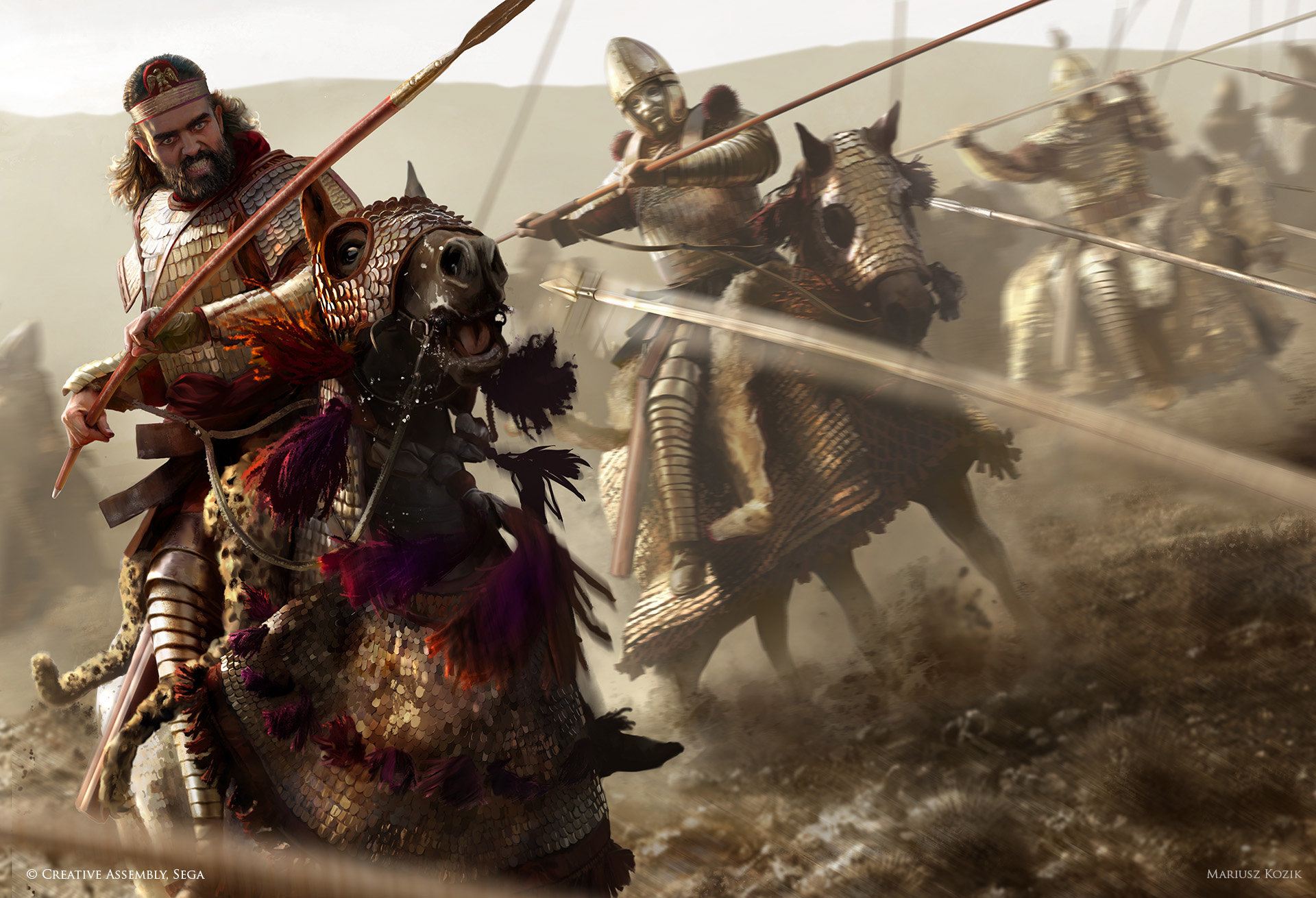Companions
Engineers may have learned to harness the power of nature itself and gained the ability to tear down city walls or set the very seas on fire, but let me tell you that nothing strikes fear in the heart of the common soldier like the deafening sound of the Companions entering the fray.The Sworn Brotherhood of Companions the the Basileus, known simply as the Companions, is typical organization of young Laparan aristocrats whose parents have pledged their lives and services to the protection of the reigning basileus. Financially supported by their families, the members of the Companions spend their days not in the idle pursuits of luxury or wealth, but the tireless study of strategy, tactics, and warfare. Quartered in barracks inside the walls of the imperial palace, the Companions move freely through the halls of the imperial court and are among the closest, and possibly only, friends and mentors of the basileus.
Composition
Manpower
Weaponry
Vehicles
Tactics
The discharge of so many firearms filled the field with the acrid smoke of black sand. Murmurs and small cheers could be heard among the ranks of men, struggling to see through the cloud they had created. Too soon, however, the thunderous sound of hooves on the packed earth betrayed that the Companions still approached, sending the men into panic even before emerging from the smoke.
In stark contrast to years past, infantry dominate the battlefield in tightly packed ranks to maximize the effectiveness of the firearms they wield. Cavalry are typically deployed in the flanks of a line of battle to maximize use of their mobility and to protect the exposed horses from the direct fire of the enemy ranks. The slow-moving, heavily armored, Companions are no exception, as their armor provides some, but not complete, protection against enemy fire.
Typically utilized as the ‘hammer’ in an ‘anvil and hammer’ attack, Companion divisions prefer to strike at an enemy that has been pinned in place by other forces. A massed charge in the wedge formation typically employed against a force already distracted is designed to break the opponents’ morale and send them into rout, where lighter cavalry units will break into pursuit.
The Lord High Marshall
The leader of The Companions of Basil III Nikolaides is the highly decorated general, Leon Argenteros, maternal uncle and acting regent to the young basileus. Recently returned to Metilene after an unsuccessful campaign in the province of Pandocheia, the Lord High Marshall has declared his intent to restore order to the imperial district.





Comments